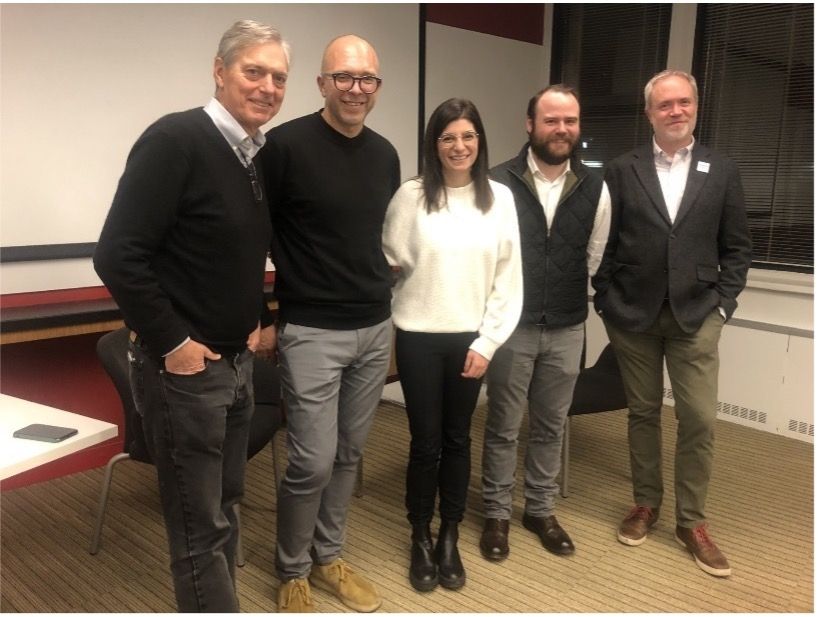Bridging Cultures: Vaidas Petrulis's Journey Through 20th Century Lithuanian Architecture in the U.S.
Vaidas Petrulis, a Lithuanian historian, and researcher at Kaunas University of Technology, traveled to the U.S. in May 2023 after receiving a CIEE-administered scholarship from the Baltic-American Freedom Foundation (BAFF) to explore how Lithuanian refugees in the 20th Century utilized architecture to express their identity and contribute to their communities across the U.S.

Reflecting on his experience as a participant in the Research Scholar program as part of BridgeUSA, Vaidas said, “The only downside was that I had to leave – I just wanted to continue working.”
"Today, when the world is once again facing threats, the Lithuanian heritage takes on a new meaning. It is not only a reflection of the past, but also a reminder for present and future generations."
Cultural and Economic Exchange
Established in 2010, BAFF aims to “deepen the ties between and among Estonia, Latvia, Lithuania, and the United States through education and exchange programs.” Each year, the foundation provides scholarships for academic professionals to conduct research in the U.S. for up to 12 months, fostering cross-cultural collaboration. CIEE is solely responsible for these BAFF Scholarships' administration, management, and support.
Vaidas deeply believes in the mission of BAFF and BridgeUSA. As a specialist in the history of 20th-century architecture, he aimed to follow the architectural trail of the post-WWII Lithuanian diaspora throughout the U.S.

Focusing on Chicago, Cleveland, and New York City, Vaidas examined how Lithuanian refugees used architecture to express their identity in an unfamiliar land and how this contributed to American history. “This isn’t just about Lithuanian heritage… The decision in 1948 to let these people into the U.S. changed not only the lives of the refugees, but American history too,” he remarked.

Architectural Heritage
Vaidas's research shed light on lesser-known aspects of Lithuanian architecture in the U.S., a topic often overlooked. To document his findings, he received additional funding to bring a crew to the U.S. to film his research for a documentary produced by Lithuanian National Television (LRT) called Stop Juosta. His work emphasized the significant influence of Lithuanian refugees on American cultural and architectural landscapes.
Community and Networks in the United States
One surprising aspect of Vaidas's experience was “how open Americans were to new ideas and creating new networks.” During his six-month stay, he became “a part of a global community” through the professional networks he developed, which continue to benefit him professionally now that he has returned to Lithuania.

Advice for Aspiring BAFF Participants
Vaidas advocates for international exchange experiences, believing they are crucial for fostering democratic thinking and shared human values. “If you really want to expand democratic thinking based on shared human values, it’s very important to build a shared history,” he stated. Through living, working, and interacting with people from different cultures, he realized that “…at our core, we are the same and we can help each other.”
Encouraging young BAFF applicants, Vaidas advised, “Find a place in the U.S. that’s known for being the best in your area of interest and just do it. Be ambitious… dream big.” He emphasized that the U.S. offers diverse opportunities for everyone.

Vaidas’s Continued Work and Advocacy
Now back in Lithuania, Vaidas continues his work in educating people about the history of Lithuanian architecture in the U.S. and other cultural heritage projects with UNESCO.
He teaches at Kaunas University and has a book coming out in October about the works of Lithuanian architect Jonas Mulokas, one of the architects he researched during his time in the U.S.
Vaidas is also a member of Docomomo International, a non-profit dedicated to documenting and conserving buildings, sites, and neighborhoods of the Modern Movement.
Vaidas’s journey exemplifies the impact of international exchange programs, the importance of cultural heritage, and the benefits of building global professional networks.
His story is a testament to the transformative power of cross-cultural collaboration and the lasting connections forged through these experiences.
Read More News from CIEE about the power of international exchange.





